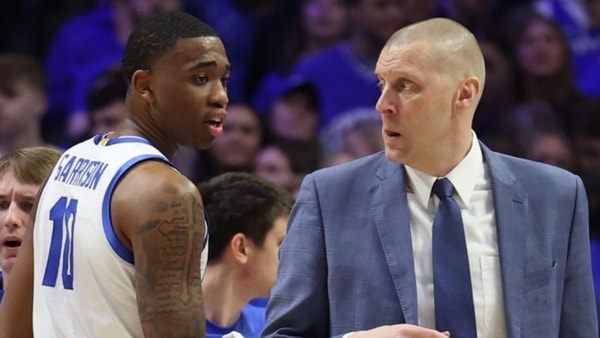Three Keys to Tonight's Game
Happy national championship day, everyone. Tonight around 11:15 pm the world will have a new title holder, and it will be either team’s second since the turn of the decade.
Who will it be? The Cats or the Huskies? Whoever it is, these three aspects will probably be the biggest factors in the contest.
1. Kentucky’s Offensive Rebounding vs. Connecticut’s Defensive Rebounding: This is an area that Kentucky has a massive advantage. Kentucky ranks 2nd in the nation in offensive rebound percentage (behind those pesky Quinnipiac Bobcats) and boasts a frontline that features the height and length of Julius Randle, Dakari Johnson, Alex Poythress, and Marcus Lee. Oh, and I forgot to mention that UK’s three starting guards are 6’6”, 6’6” and 6’7”. Meanwhile, UConn ranks 247th in the country in defensive rebounding percentage, although it has improved this postseason presumably due to the improved play of 7-footer Amida Brimah. If Brimah can help UConn at least keep the battle of the glass close then that is a huge victory for UConn as Kentucky is at its best when they are able to punish you on the offensive boards.
Top 10
- 1
Penn State police warning
Saquon celebration triggers warning
- 2
Top 25 shakeup
AP Poll Top 25 prediction
- 3
Ja'Juan Seider
ND targeting PSU assistant
- 4
Bama to No. 1?
ESPN says so with confidence
- 5
Down goes No. 2 Duke
Clemson opens the door for Bama
Get the On3 Top 10 to your inbox every morning
By clicking "Subscribe to Newsletter", I agree to On3's Privacy Notice, Terms, and use of my personal information described therein.
2. Connecticut’s Perimeter Defense vs. the Harrison twins: Interestingly enough, as quick as Napier and Boatright are, they aren’t all that great at drawing fouls (which seems to be a concern for a lot of Cats fans), as UConn ranks just 217th in free throw rate. The flip side, though, is where it gets important. The twins have been fantastic getting into the lane this postseason, and are two extremely integral parts in Kentucky’s 12th ranked free throw rate. The biggest issue arises from the fact that UConn’s perimeter defense is among the best that the Cats have seen all year, as the Huskies hold their opponents to just a 44.6% effective field goal percentage. What this matchup basically buckles down to is size vs. speed. If the lateral quickness of Napier/Boatright overwhelms the twins on the outside then it could be a long night for the Cats (the twins do have a penchant for turnovers). Likewise, if the twins are able to use their height and strength to get inside and draw fouls then UConn will be in for a long night.
3. Kentucky’s Outside Shooting: During the regular season Kentucky posted a three point shooting percentage of 32.6%. Cal assured fans all season long, though, that this wasn’t a bad shooting team but they were just not getting good looks from beyond the arc leading to the bad percentage. Ever since postseason play began, though, the Cats have definitely improved as an outside shooting ball club as they’re shooting 39.7% from downtown since the beginning of the NCAA tournament. Now, you could make both arguments here. The Cats do appear to be taking better looks from beyond the arc than they were in the regular season, but they’ve also started hitting really tough looks as well (um.. er.. Aaron Harrison?). So at the end of the day we may be asking ourselves this question: Did the Cats revert back to their old ways of being a poor outside shooting team? Or did they continue as the improved outside shooting bunch en rout to their 9th championship?
Cats 76, UConn 67
@BWardKSR










Discuss This Article
Comments have moved.
Join the conversation and talk about this article and all things Kentucky Sports in the new KSR Message Board.
KSBoard